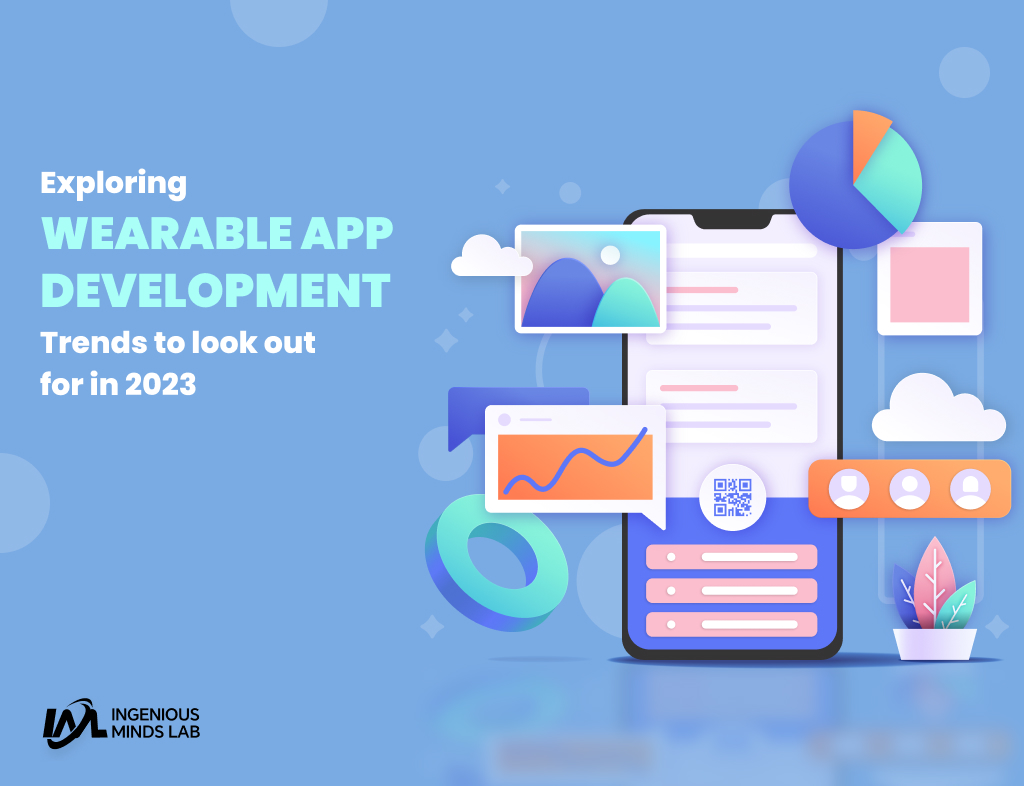Wearable technology has revolutionized the way we interact with the world around us. From fitness trackers to smartwatches, wearable devices have become an integral part of our daily lives. As we look towards the future, it’s clear that Wearable app development will continue to grow and evolve, with new trends emerging every year.
In this blog post, we’ll explore some of the top wearable app development trends to look out for in 2023, and how they can benefit businesses and consumers alike.
Wearable App Development Trends to Look Out for in 2023
Health and Wellness Monitoring
One of the biggest trends in wearable app development is health and wellness monitoring. In recent years, wearable devices have become popular for tracking fitness goals and monitoring vital signs, such as heart rate and blood pressure. In 2023, we can expect to see more advanced health and wellness monitoring features in wearable apps, including real-time monitoring of vital signs, sleep tracking, and more.
This trend is not just beneficial for individual consumers, but also for healthcare providers and insurers. Wearable app developers can collaborate with healthcare providers to create apps that track patients’ health data and provide personalized health recommendations. This data can also be used by insurers to offer personalized insurance plans based on individual health data.
Augmented Reality (AR) and Virtual Reality (VR)
Potential trend in wearable app development for 2023 is Augmented Reality (AR) and Virtual Reality (VR) have been around for a while now, but they have yet to reach their full potential in the wearable app development space. Wearable devices are the perfect platform for AR and VR experiences, as they provide a more immersive and interactive experience than smartphones or tablets.
In 2023, we can expect to see more wearable app development that take advantage of AR and VR technologies, such as AR-powered navigation or VR-enhanced gaming. AR and VR can also be used in the healthcare space, such as for virtual patient consultations or surgery simulations.
Personalization and Customization
Potential trend in wearable app development for 2023 is Personalization and customization have been growing trends in wearable app development for years, and wearable apps are no exception. Wearable app development will continue to offer personalized experiences that cater to individual users’ preferences and needs. This may include personalized fitness plans, personalized nutrition advice, or customized coaching programs.
In addition, wearable app developers can take advantage of customization features to allow users to personalize their devices’ appearance, such as changing watch faces or bands.
Voice Recognition
Potential trend in wearable app development for 2023 is that Voice recognition technology has become prevalent in smartphones and smart home devices, and in 2023, wearable app development will become more prevalent in wearable devices as well. Wearable app developers can incorporate voice recognition technology into their apps to offer hands-free control and make it easier for users to access information or perform tasks.
This trend is particularly beneficial for individuals with disabilities or those who have difficulty using their hands, as it allows them to interact with their devices more easily.
Integration with IoT Devices
Potential trend in wearable app development for 2023 is The Internet of Things (IoT) has been growing rapidly in recent years, and wearable devices are no exception. In 2023, we can expect to see more wearable apps that integrate with IoT devices, such as smart home devices or connected cars.
This integration can offer a seamless user experience, allowing users to control their IoT devices from their wearable devices or receive notifications from their IoT devices directly on their wearables.
Integration with Chat Bots
Another trend we may see in wearable app development in 2023 is the integration of AI-powered chatbots, such as ChatGPT, into wearable devices. Chatbots have become increasingly popular in recent years, and their ability to understand natural language makes them an ideal candidate for wearable devices.
Incorporating a chatbot into a wearable device could offer several benefits, such as allowing users to easily access information or perform tasks without needing to interact with a screen. For example, a user could ask a chatbot on their smartwatch to set a reminder, make a phone call, or order a ride, all with just their voice.
Furthermore, the chatbot could be trained to understand the user’s preferences and provide personalized recommendations or advice. For instance, if the user is trying to lose weight, the chatbot could suggest healthy meal options or provide motivational messages.
The integration of AI-powered chatbots into wearable devices could also offer businesses a new avenue for customer engagement. Chatbots can be trained to answer common customer inquiries, provide product recommendations, or even process orders, all through a wearable device.
GPS technology in wearable devices
Another potential trend in wearable app development for 2023 is the use of GPS technology in smartwatches to provide location tracking for children. Parents and guardians may use this feature to keep track of their children’s whereabouts, ensuring their safety and peace of mind.
In addition to GPS, wearable devices could also incorporate other sensors and technologies, such as accelerometers or heart rate monitors, to provide additional information about the child’s activity and wellbeing. This could be particularly useful for parents with young children who are not yet able to communicate effectively.
Wearable devices with location tracking capabilities could also be useful for elderly or disabled individuals who may require assistance or monitoring. For example, a smartwatch with GPS and fall detection could alert caregivers or emergency services in the event of a fall or other medical emergency.
However, it is important to note that the use of location tracking technology in wearable devices raises privacy concerns, particularly in the case of children. Parents and guardians will need to consider the ethical implications of tracking their children’s location, as well as ensuring that the data is stored securely and only accessed by authorized individuals.
Overall, the use of GPS technology in wearable devices for location tracking is a trend that could have significant implications for safety and wellbeing. As technology continues to evolve, it will be interesting to see how this trend develops and how it is implemented in practice.
integration of e-payment features
we can expect to see in wearable app development in 2023 is the integration of e-payment features into wearable devices. As e-commerce continues to grow, wearable devices such as smartwatches or fitness trackers could become a popular payment method for users.
Incorporating e-payment features into wearable devices could provide several benefits, such as convenience and speed. With just a few taps on their smartwatch, users could make purchases without needing to pull out their wallets or phones.
Furthermore, wearable devices could incorporate biometric authentication, such as fingerprint scanning or facial recognition, to ensure secure transactions. This could offer a more secure payment method compared to traditional credit or debit cards, which can be easily lost or stolen.
In addition to making purchases, wearable devices with e-payment capabilities could also be used for contactless payments, such as public transportation or vending machines. This would further enhance the convenience and ease of use of wearable devices for everyday transactions.
However, the integration of e-payment features into wearable devices also raises security concerns, particularly in regards to protecting users’ financial information. Wearable app developers will need to ensure that proper security measures are in place to prevent fraud or data breaches.
Overall, the integration of e-payment features into wearable devices is a trend that could revolutionize the way we make payments. With the added convenience and security of wearable devices, it will be interesting to see how this trend develops and how it changes the way we shop and pay for goods and services.
integration of M-Commerce
we can expect to see in wearable app development in 2023 is the integration of Mobile Commerce (M-Commerce) features into wearable devices. M-Commerce is the process of making purchases through mobile devices, and wearable devices could become an important player in this space.
With M-Commerce capabilities integrated into wearable devices, users could easily make purchases through their smartwatches or other wearable devices. This could provide a seamless shopping experience, with users able to browse and purchase products on the go without needing to use their phones or computers.
M-Commerce on wearable devices could also include features such as mobile wallets, loyalty programs, and push notifications for discounts or promotions. This would allow users to access and use these features directly from their wearable devices, without needing to switch between different apps or devices.
Furthermore, wearable devices with M-Commerce capabilities could enable users to take advantage of emerging technologies such as augmented reality (AR) or virtual reality (VR) for an enhanced shopping experience. For example, a user could use their smartwatch to view an AR product demonstration or try on virtual clothing items.
However, as with e-payment features, the integration of M-Commerce capabilities into wearable devices raises security concerns. Wearable app developers will need to ensure that proper security measures are in place to protect users’ financial information.
Overall, the integration of M-Commerce features into wearable devices is a trend that could transform the way we shop and make purchases. As technology continues to evolve, it will be interesting to see how wearable devices are used to enhance the mobile shopping experience.

